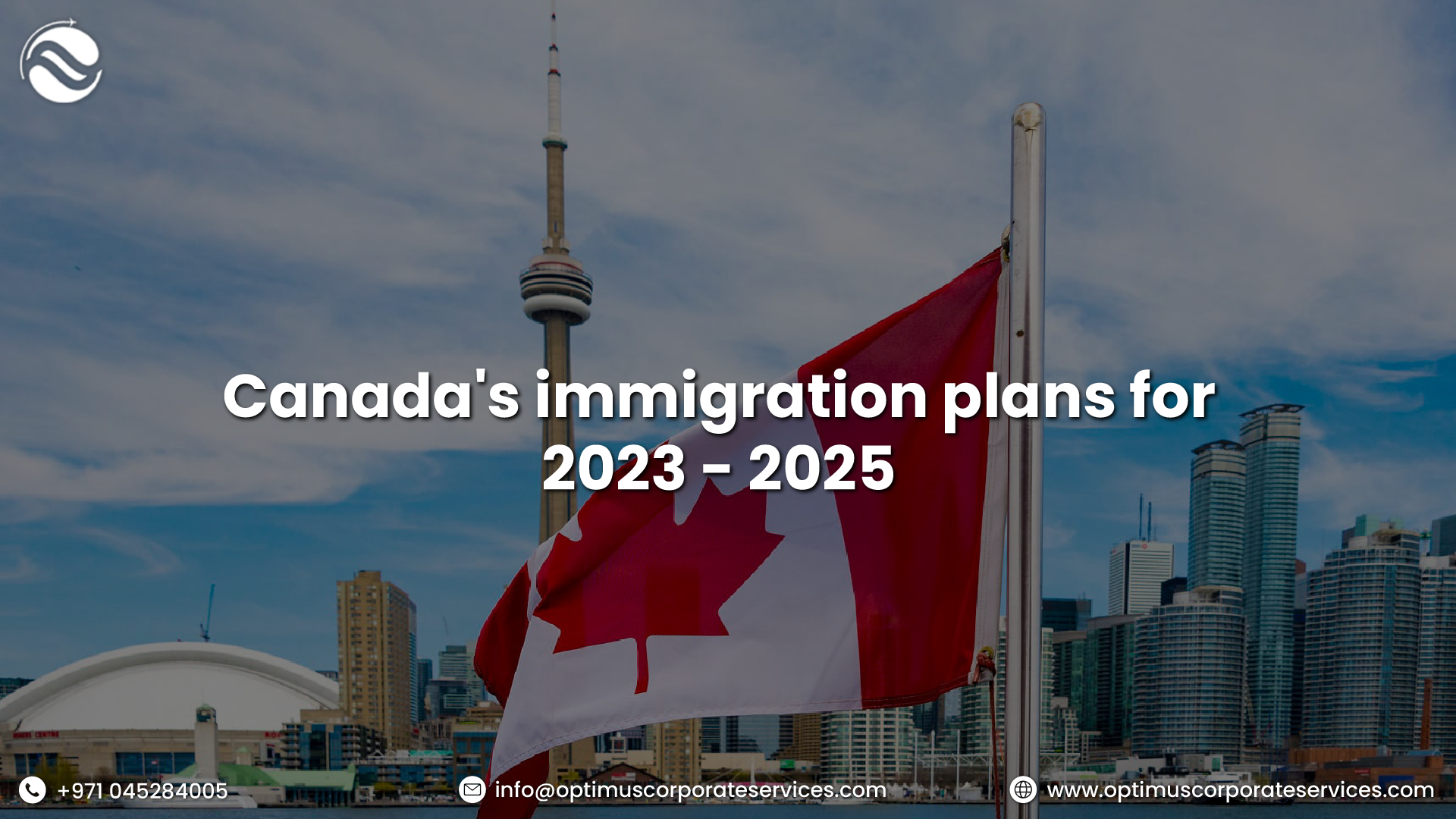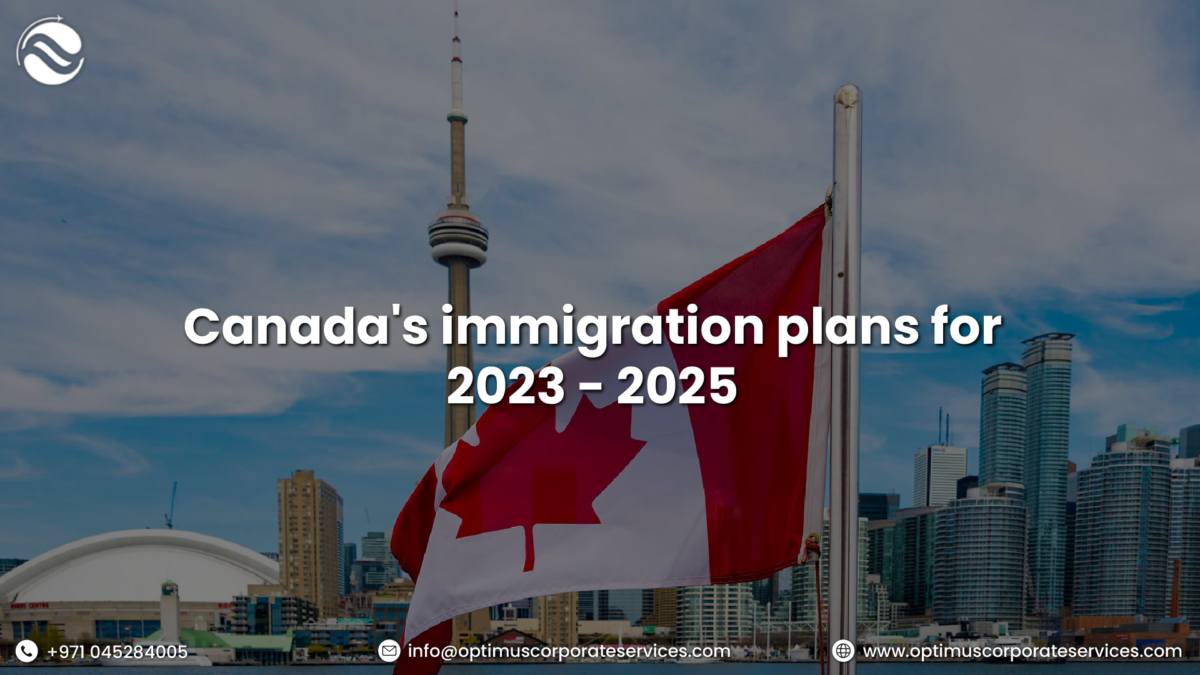Blog
- Home
- Blog

Canada’s immigration Plans for 2023 -2025
The statistics are in! Canada just unveiled its immigration levels plan for the years 2023–2025. The goals of Canada’s immigration policy are to aid refugees, reunite families, and boost the country’s economy. Canada continues to place a high premium on immigration despite its aging population and dropping birth rate. The government’s plan to deal with these difficulties and guarantee the nation’s long-term economic success includes immigration as a vital element.
The number of immigrants admitted during the next three years will be determined by the new and upgraded Canada Immigration Level Plan for 2023–2025.
The coronavirus pandemic caused Canada’s immigration goals for 2020 to fall short, but this hasn’t diminished Canada’s commitment to providing immigrants with new job opportunities in Canada. On October 30, 2020, Canada’s Minister of Immigration, Refugees, and Citizenship, Marco Mendicino, unveiled the 2023–2025 Immigration Levels Plan, demonstrating the country’s commitment to welcoming more than 400,000 immigrants annually until 2023. It will directly benefit those who want to immigrate to Canada and those who have already gone there to study.
The Provincial Nominee Program is a term used to describe several immigration programs run by Canadian provinces and territories. Approximately 68,647 foreign nationals received PR through PNP programs in 2019. Students from other countries may also apply to these programs.
The strategy unveiled on November 1 states that Canada would try to welcome
- 2023 will see 465,000 new immigrants.
- 2024 will see 485,000 new immigrants.
- 2025 will see 500,000 additional immigrants.
Did you know? Canada broke an all-time immigration record by welcoming over 432,000 immigrants in 2022.”
Canada is making severe attempts to address the labor shortage situation, as seen by the trend of issuing “more ITAs” with “low CRS.” In addition, Canada will work to boost the economy, reunite families, and provide protection to refugees escaping persecution in their native country with the aid of its Immigration Level Plan for 2023–2025.
Plans for Canadian Immigration in 2023–2025
Economic Immigration
Canada will accept most of the intended new immigrants to Canada through programs for the economic classes, such as Express Entry and Provincial Nominee Programs (PNPs). By 2025, Canada hopes to accept 332,500 new immigrants under the Provincial Nominee Program and 305,820 new immigrants through Express Entry. By 2025, there will be 848,595 immigrants admitted under the economic class.
Sponsorship for Family Class
The second-largest program outlined in the Immigration Level Plan 2023–2025, Canada’s Family Class Sponsorship, will similarly work to reconnect families of immigrants living in the nation. By 2025, Canada hopes to accept over 240,000 new immigrants under the Spouse, Partners, and Children program. Furthermore, by 2025, 98,500 new immigrants will be the focus of the Parents and Grandparents Program (PGP).
Refugees and Protected Persons
It is well-known and well-established that Canada grants asylum to refugees fleeing dangerous conditions in their home country. The plan’s overall goal for refugee immigrants is 224,750 by 2025.
Canada’s Immigration Strategy | Key Takeaways
Over the next three years, we will admit most new immigrants in Canada through the Provincial Nominee Programs (PNPs) of the country’s ten provinces. Due to the vital role that regional immigration programs like the PNP play in the nation’s development, the government is increasing the intakes under these programs.
In stark contrast to what we’ve seen in prior years, this is the current situation. Typically, the Federal High Skilled (FHS) category in Canada—which includes programs run through Express Entry—brings in the newest immigrants. Canada accepted 83,500 new permanent residents through the PNP and only 55,900 through Express Entry as part of the previous immigration plan for 2022. Since the launch of Express Entry in 2015, Canada has never requested more immigrants via PNPs than through Express Entry.
With this new initiative, Canada will continue demonstrating its commitment to immigrant families by delivering one of the world’s most outstanding “Family Reunification” programs. In addition, the new Immigration Level Plan 2023–2025 is anticipated to provide benefits to many immigrants sponsored by families.
Other Regional Immigration programs will also become more significant in addition to the Provincial Nominee Programs (PNPs). For example, Canada has long discussed getting more immigrants to rural areas. The Rural and Northern Immigration Pilot and the Atlantic Immigration Program were established to support this initiative.
According to Sean Fraser, the minister of immigration, Express Entry will start holding targeted drawings in 2023 to entice new immigrants to areas that need them.
Canada is now going through a unique time, given the severe labor shortage issue and the over 1 million job opportunities in Canada. Canada anticipates breaking a new immigration record in 2023 thanks to the revised Immigration Level Plan 2023–2025. If successful, Canada will break its record of 400,000 new permanent residents annually, set in 1913 for the third consecutive year.
Why Canada Needs Immigrants
Canada encourages substantial immigration to maintain a robust economy. Canada’s population is among the oldest in the world, and its birth rate is among the lowest. Financial and economic pressures result from this. Canada has a soft natural population growth rate, which hurts the expansion of the labor force and the economy. Canada is challenging raising taxes to fund social expenditures on services like education, health care, and other crucial sectors that ensure the country’s high living standards. Low economic growth makes this problematic.
As a result, Canada has increased immigration levels since the late 1980s to accelerate population growth, labor force expansion, and economic expansion. As a result, Canada’s population, labor force, and a growing portion of its economic development are now driven mainly by immigration.
By 2030, 9 million baby boomers in Canada will be eligible for retirement at 65. As a result, Canada will experience a decline in employment at a time when social spending on healthcare will increase. Canada has taken the initiative to address this issue by steadily increasing its immigration goals for more than 30 years.
Since 1988, Canada has consistently accepted more than 200,000 immigrants annually, as shown in the graph below. However, it has recently decided to raise its levels to more than 400,000 annually. As a result, the current immigration rate in Canada is around 1.1%. In other words, Canada accepts three times more immigrants than the United States of America on a per-capita basis.
It seems likely that Canada will continue to gradually increase its immigration levels over the next few years based on its demographic realities and immigration trends. Immigration will continue to be essential to the nation’s economy and financial stability.
Furthermore, there is a compelling case to be made that the coronavirus pandemic has increased the importance of immigration. In the short term, COVID-19 has hurt Canada’s economy and raised government spending on social services.
Additionally, in 2019 Canada’s birth rate reached 1.47 children per woman, a record low. Given Canada’s low birth rate before the pandemic and the possibility that the pandemic will further lower the birth rate due to economic uncertainty, the country will rely even more on immigration in the coming years to support population growth. If Canada’s birth rate stays low, immigration will account for an even more significant portion of future labor force growth. Last but not least, Canada needs to expand its tax base.
Highlights of the New Immigration Levels Plan for 2023–2025 include
A long-term focus on economic growth, with slightly more than 60% of financial admissions made by 2025
Using enhanced Express Entry capabilities to accept immigrants with the necessary credentials in fields including STEM, manufacturing, healthcare, and construction crafts (Science, Technology, Engineering, and Math) Improving the speed of family reunions Increases in regional initiatives, including the Provincial Nominee Program, the Atlantic Immigration Program, and the Rural and Northern Immigration Pilot, to meet specific local labor market requirements Guaranteeing that at least 4.4% of newly arrived permanent residents are Francophones outside of Quebec, and
They are giving people escaping persecution a place to stay, notably by boosting the Economic Mobility Pathways.
Cohen Immigration Law can help you if you need it.
With more than 45 years of expertise, Cohen Immigration Law is a preeminent Canadian immigration law practice. Over 60 Canadian immigration attorneys, paralegals, and specialists make up Cohen Immigration Law. We are committed to assisting people in pursuing their objectives of immigrating to Canada. We offer support in various sectors, such as business and skilled worker immigration, family sponsorship, work and study visas, citizenship, and inadmissibility. Optimus Corporate Services has become one of the most reliable sources of information on the best Canadian immigration worldwide. Please get in touch if you need help.
TO KNOW MORE DETAILS


